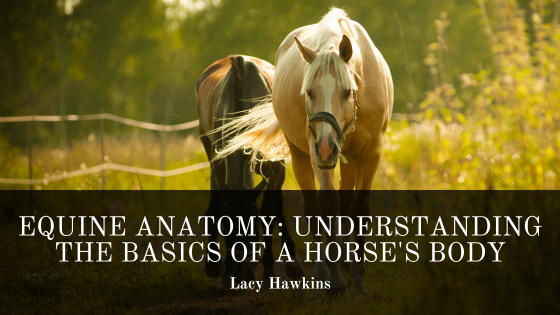Horses have long captivated humans with their grace, power, and majestic presence. Understanding the basics of equine anatomy not only enables horse owners and enthusiasts to better care for these magnificent creatures but also aids in appreciating their remarkable physiology. From their muscular framework to their unique digestive system, a horse’s body is a marvel worth exploring.
Skeletal Structure
At the core of a horse’s body is its skeletal structure, providing support, protection, and mobility. Comprised of over 200 bones, a horse’s skeleton is an intricate network. The backbone, consisting of the neck (cervical vertebrae), back (thoracic vertebrae), and loins (lumbar vertebrae), forms the spine, crucial for balance and movement. The legs, with their long, powerful bones, enable the horse to gallop and bear its weight with ease.
Muscular System
The equine muscular system is a testament to strength and agility. Muscles, attached to bones by tendons, allow for movement, from the powerful hindquarters propelling the horse forward to the delicate muscles in the face that convey expressions. Understanding muscular anatomy helps in training horses effectively, ensuring their health and performance.
Digestive System
A distinctive feature of equine anatomy is the digestive system, designed for a herbivorous diet. The horse’s stomach is relatively small, making it susceptible to digestive issues like colic. However, its unique hindgut fermentation chamber, the cecum, aids in digesting fibrous plant material. Proper nutrition and feeding practices are crucial to maintain a healthy digestive system.
Cardiovascular and Respiratory Systems
A horse’s cardiovascular system, including the heart and blood vessels, is integral for supplying oxygen and nutrients throughout the body. Similarly, the respiratory system, with its large lungs and intricate airways, ensures the intake of oxygen crucial for sustained physical activity.
Nervous System
The nervous system coordinates movement, behavior, and bodily functions. A horse’s brain, though smaller compared to its body size, is highly developed, allowing for complex behaviors and interactions. Understanding equine behavior involves comprehending how their nervous system functions.
Hoof and Feet
The horse’s feet and hooves are engineering marvels. Composed of a tough outer layer and sensitive inner structures, proper hoof care is essential for a horse’s overall well-being. A well-maintained hoof is crucial for balance, movement, and shock absorption.
Appreciating equine anatomy is pivotal for anyone involved in the care, training, or admiration of horses. Whether you’re a seasoned equestrian or a curious enthusiast, understanding the basics of a horse’s body enhances your ability to ensure their welfare, maximize their performance, and deepen your appreciation for these magnificent creatures. Moreover, it fosters a sense of responsibility towards their care and welfare.
Horses have been companions to humans for centuries, and delving into their anatomy is not just an academic pursuit but a means to forge a deeper connection with these incredible animals. Learning about their intricate systems and understanding how they function harmoniously enables us to respect their physical capabilities while nurturing their health and vitality.
